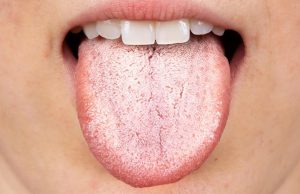
Envision a single mushroom with the power to awaken dormant neurons and rejuvenate the aging brain.
That’s the exciting possibility being uncovered in recent studies of Hericium erinaceus, commonly known as lion’s mane.
Traditionally celebrated in Eastern medicine, this unique mushroom is now gaining serious attention from the scientific community.
A recent article in the Journal of Neurochemistry reported that lion’s mane extracts can stimulate neurotrophic signaling, fostering axon development, strengthening synaptic connections, and enhancing memory in mice.
These findings suggest that the long-held goal of brain regeneration may be closer than ever to becoming a medical reality.
What Makes Lion’s Mane Unique
Lion’s mane stands out not only for its snow-white, shaggy appearance but also for its powerful neuroactive properties.
Its fruiting bodies contain hericerins—molecules capable of crossing the blood-brain barrier and boosting neurotrophic factors like NGF (nerve growth factor) and BDNF (brain-derived neurotrophic factor), both essential for brain cell growth and resilience.

But its influence goes beyond mere support. In laboratory experiments, neurons exposed to lion’s mane extract showed significant regenerative activity: they formed longer axons, developed more branches, and expanded their growth cones—even without added growth factors—demonstrating true regenerative capabilities.
Activating Multiple Neural Pathways
One of lion’s mane’s most remarkable traits is its ability to engage several brain-growth pathways simultaneously, notably the ERK1/2 signaling cascade.
This broad-spectrum—or “pan-neurotrophic”—activation makes it less dependent on individual receptors like TrkB, which can decline with age.
Even when TrkB was absent, the extract still activated ERK1/2 and CREB, crucial players in memory, synapse health, and neuronal survival.
When hericerin A was combined with low levels of BDNF, the response was even more robust, suggesting that it could be a low-risk, highly effective tool in treating neurodegenerative diseases.

Improved Memory in Animal Studies
In experiments with adult mice, daily supplementation with hericerin A or crude lion’s mane extract over four weeks led to significant improvements in learning and memory tasks.
Brain scans revealed increased levels of BDNF, NGF, and synaptic proteins—especially in the hippocampus and cortex, areas vital for memory.
These cognitive benefits were comparable to those seen with piracetam, a widely used nootropic. Since lion’s mane works through different biological mechanisms, combining the two could amplify effects without introducing negative interactions, opening the door to future therapies.
Supporting Brain Health Today
Although concentrated supplements require more study, including small amounts of lion’s mane in your diet may still offer neuroprotective benefits due to its antioxidants and polysaccharides.

To retain its bioactive properties, consider light cooking methods like steaming or sautéing.
For those seeking further support, combining lion’s mane with healthy habits—such as exercise, quality sleep, and mental engagement—can naturally boost your brain’s own production of neurotrophic factors like BDNF.
If you choose to try supplements, opt for standardized products with verified levels of hericerins or erinacines. Always speak with your healthcare provider, especially if you’re managing a medical condition, pregnant, or taking medication.
Conclusion: A New Frontier in Brain Health
Lion’s mane is rapidly emerging as a powerful ally in the quest to slow or reverse cognitive decline.
Its unique ability to activate multiple neural repair pathways and enhance memory in animal studies makes it a promising bridge between ancient herbal wisdom and modern neuroscience.
While further research in humans is needed, early findings are encouraging. As science continues to unlock its secrets, Hericium erinaceus may become a vital tool in preserving—and potentially restoring—brain function as we age.
















